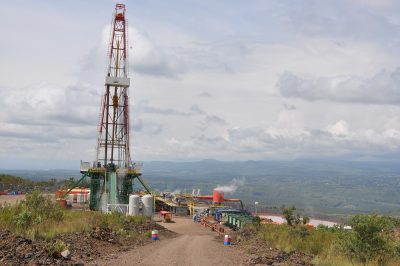Renewables Project Finance: cause for optimism
Renewable Energy World that there are still promising signs and valid cause for optimism for the geothermal sector.
In a recent article, Renewable Energy World looks at project finance in today’s difficult market environment. The article claims that despite the drying up of “short-term bank lending or debt securities issuance, project or corporate finance, private placements or tax equity deals”, there are still “promising signs and valid cause for optimism.
The stimulus package of U.S. president Obama with its green core is mentioned of bringing potentially as “much as USD 126 billion worth of govenrment capital and additional private sector incentives into the economy over the next 2 years.”
The article then goes on to talk about the “Rising cost of (and shrinking demand for) tax equity. Basically it says that the expected rate of return on tax equity investment is now higher and the cost of capital from a project developer’s perspective has increased.” There are also a lot less players for the monetization of tax incentives. But – as Raser Technologies (NYSE:RZ) puts it – there are still investors willing to pay USD 0.90-0.95 on the dollar for credit packages. The banks are mostly not in the market anymore, but there are still a large number of companies in the market for tax equity.
On Power Purchase Agreements, the article describes the economics of those long-term agreements developers have been able to negotiate with power utilities. These elements were important puzzles in the overall financing for renewable and geothermal projects. The state Renewable Portfolio Standards force utilities to buy a percentage of their supply from renewables, now with the economic difficulties those higher prices will have to be pushed on consumers. So that tool basically has made “ratepayers effectively finance development.” So a federal RPS would be necessary to change that.
Regarding Carbon Prices and the Stimulus Packages, industry players seem to be optimistic, particularly about the American Recover & Reinvestment Act. Today – so the article – “project developers have a choice of taking a 10% investment tax credit or a $0.02 per kilowatt-hour production tax credit for a project’s first ten years. President Obama’s new bill proposes to increase the ITC to 30%.”
“Investment tax credits are easier to monetize as compared to production tax credits,” Ormat’s Dita Bronicki explained. “There are ways to alleviate the pressure in the market by being able to monetize [credits] directly. Certain elements of the bill deal with being able to get cash rather than tax credits,” she added.
“A national RPS and emissions cap-and-trade system are other proposed elements of a national “green” economic plan.” All of that makes industry players optimistic, also because in the longer term of things, independence from oil (despite current price drop), enhancing environmental and national security are still key issues.











